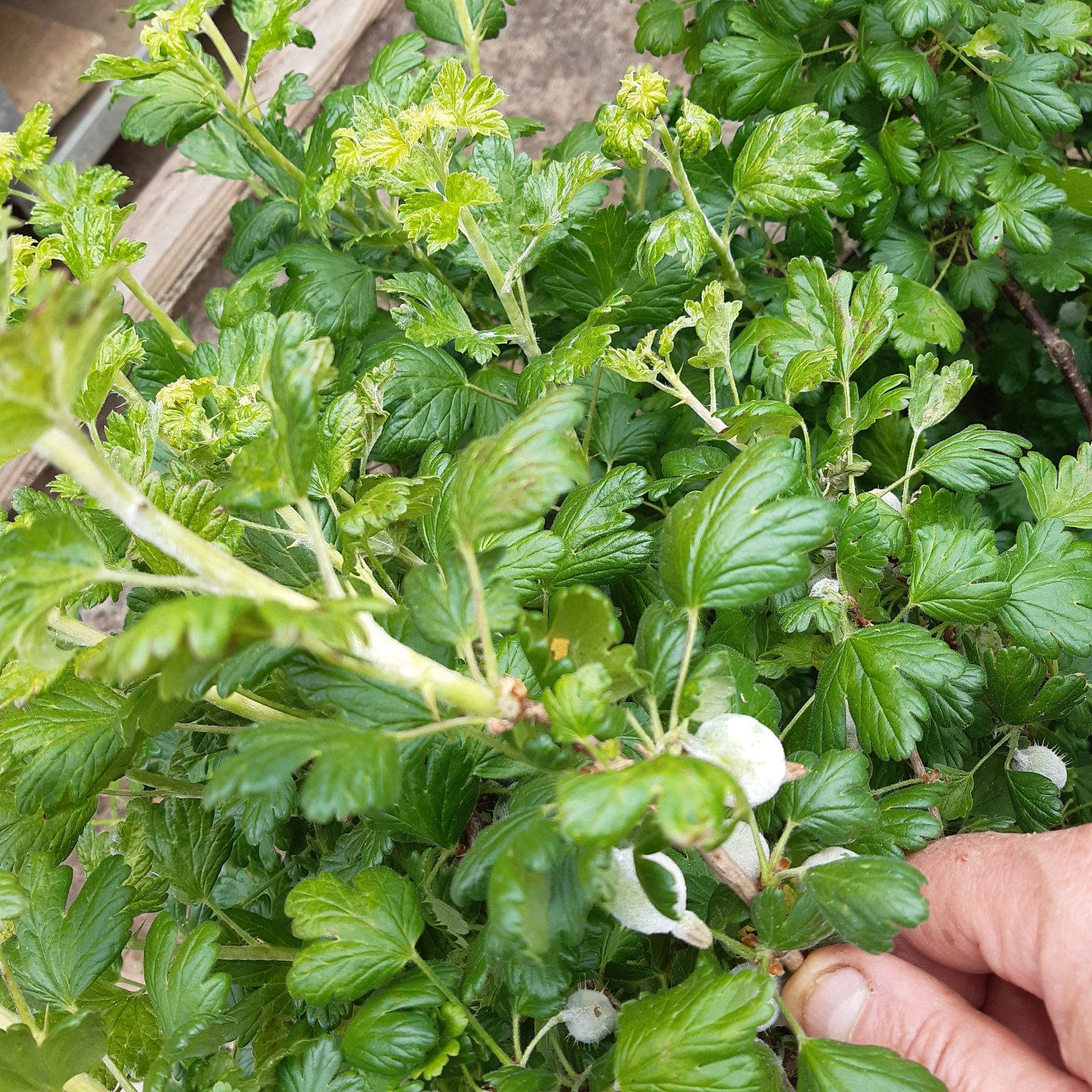The Old Testament book of Leviticus contains a number of laws and warnings about how to deal with mildew on clothing, leather and other materials. Once it has appeared it is difficult to clean or remove and for a nomadic people, reliant on tent material and clothing for protection allowing mildew to spread unchecked would have caused real problems. It is the same for the allotment holder today. American Gooseberry mildew – Podosphaera mors-uvae – used to be a serious problem for commercial growers before the introduction of the resistant UK developed cultivar called ‘Invicta’ sometime in the 1970s. The powdery white mildew appears on young berries and shoots in early summer (see photo) and, for those of us who grow older varieties such as ‘Lancashire Lad’ – a lovely red dessert gooseberry, it remains a problem. Surprisingly it is more of an issue in dry weather than wet. So the recent run of sunny weather whilst the gooseberries were flowering and sending out their new growth has seen the appearance of gooseberry mildew on my ‘Lancashire Lad’ bush. What can you do about it? Unlike the book of Leviticus I need not get a priest to examine the bushes; the fruit will develop – the mould can be washed off but will have brown patches and will discolour on cooking. The affected shoots will need to be cut back and burnt. There are a number of fungicide sprays available but not to the organic grower like me. Prevention is always better than cure and the answer is that I haven’t been severe enough with my pruning over winter – the bush has become very dense which keeps stagnant air trapped within the leaves and shoots which has encouraged growth of the mildew. Washing the bushes with a 10:1 concentration of water to wood ash is an old remedy but it is the rigorous pruning of the bush to an open shape which is the key protection I have missed.
Elsewhere, this week’s low overnight temperatures have seen frenzied activity in the evening earthing up soil to protect the young shoots of potatoes and dahlias emerging from the ground. You only need the temperature to fall to just under 4°C for this to be a problem for such tender plants. The mean last frost time for this area is the middle of May so it’s not unexpected – you just have to watch the weather very carefully right now!
